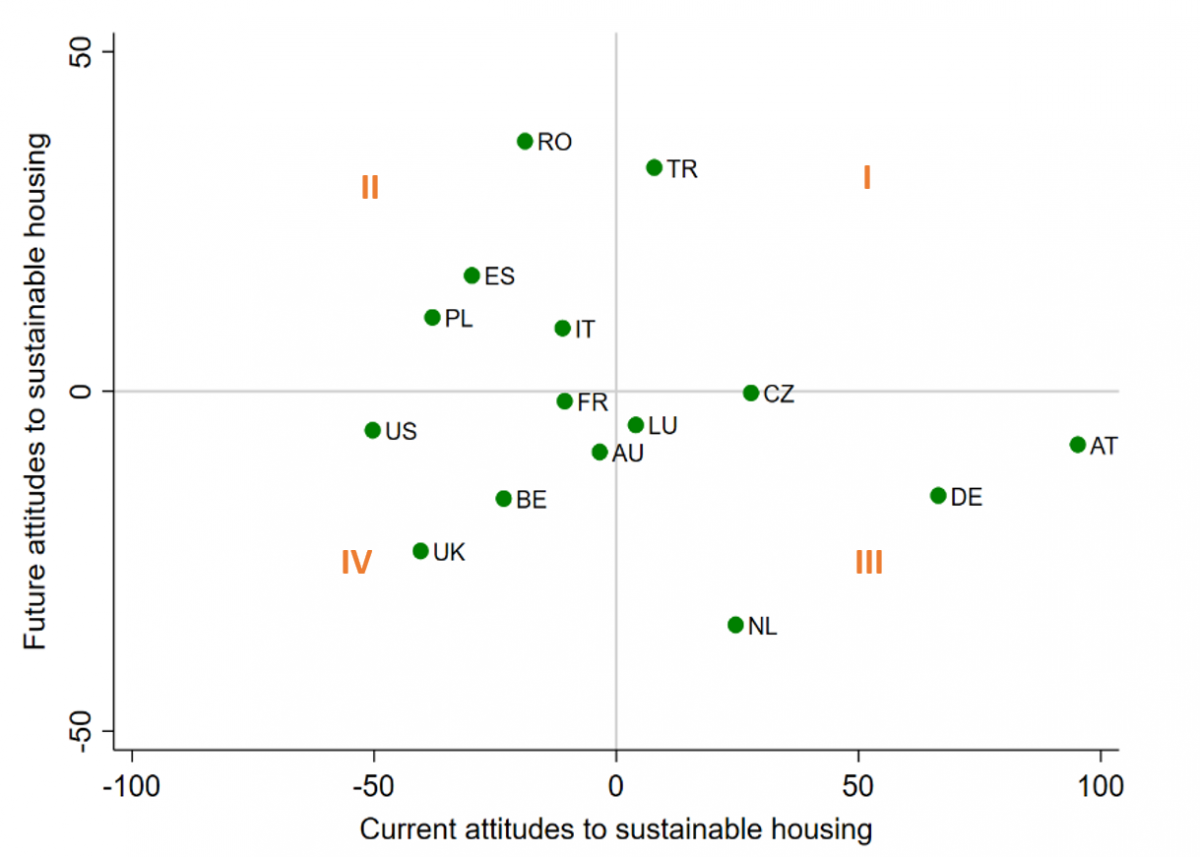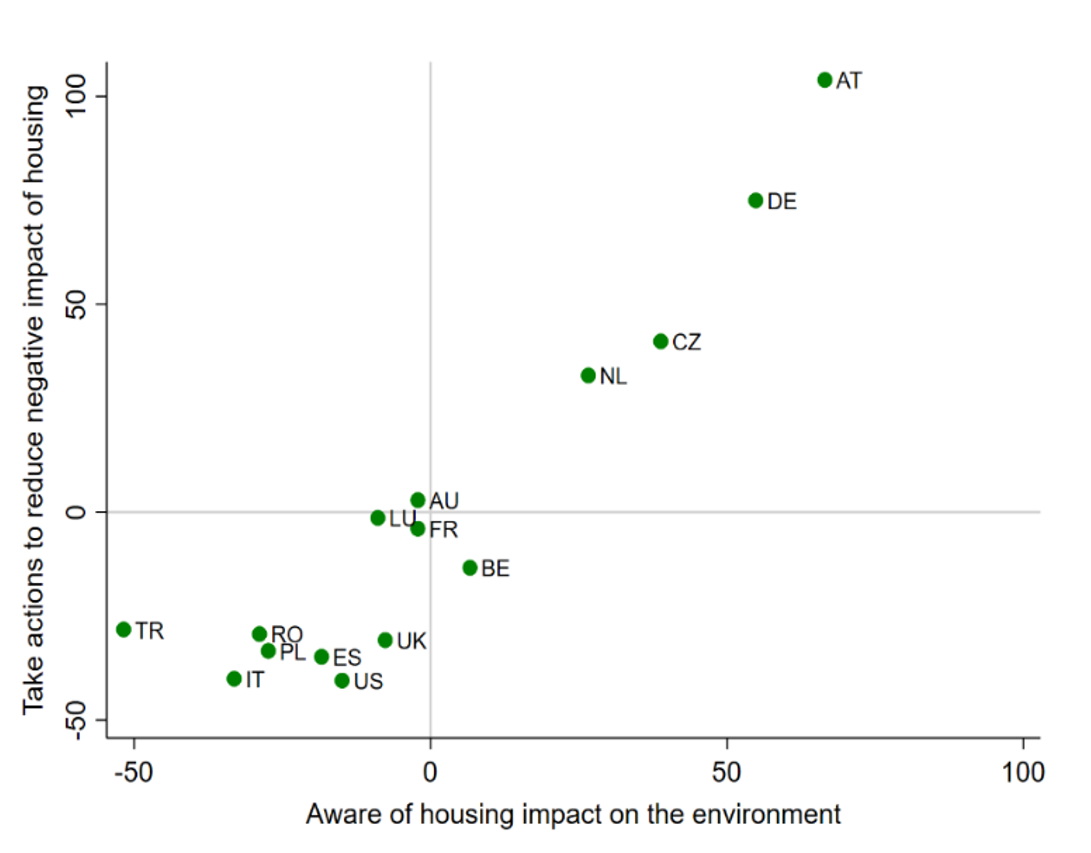Our homes: It’s not easy being green
We've discovered there are some big differences in attitudes to making our homes more sustainable across numerous countries, and there's even evidence of 'green fatigue'
There's no escaping it, the way we live creates greenhouse gas emissions. In fact, it accounts for some 24% of total greenhouse gas emissions, according to the US Environmental Protection Agency and roughly a third of that figure comes from house building itself. No wonder then that so much attention is being paid to greener housing such as sustainable construction and low-energy homes.
But, how much is the average citizen currently aware of these issues and how much more would he or she be willing to do in the future to make their housing greener? In the latest ING International Survey Homes and Mortgages 2018, we asked around 15,000 people in 13 European countries, the USA and Australia about their current attitudes to reducing the environmental impact of their housing and what they were prepared to do in the future to reduce that still further. You can download that report here.
Comparing current and future attitudes
This chart gives a simple picture of the current and future attitudes to greener housing of people per country.

The responses to questions indicating how much attention people paid to the effect of their housing choices were ranked to produce an indicator of current attitudes to sustainable housing. This is shown on the horizontal axis. Responses to questions indicating an intention to reduce environmental impact in the future were used to create an indicator of future sustainability. This is shown on the vertical axis.
Plotting the two against each other gives a measure of current and future sustainable housing attitudes by country. The upper right quadrant (labelled I) can be considered as always green. Survey respondents in Turkey were not only more likely than average to pay attention to sustainable issues now (such as recycling and using low energy appliances) but are more likely to do so in the future, for example by installing further energy saving devices where possible.
The upper left quadrant represents those countries where people hope to pay more attention to sustainable housing issues in the future, even though they lag behind at present. The lower right quadrant represents those countries where green housing behaviour already exists but is unlikely to improve further. The lower left represents those countries where responses indicate lagging behind now and lower relative expectations of improvement in the future.
Going greener
However, there is a problem. The dispersion of countries in the chart above shows that being green now does not necessarily mean that residents in that same country will make efforts
There is evidence of 'green fatigue'
to become greener in the future. There is evidence of “green fatigue” which is an indication that people in these countries feel they have done enough already. Respondents from Germany, Austria and the Netherlands are less likely than average to think they could do more to reduce their impact on the environment. Furthermore, they are also less likely to respond that working together would be beneficial to the environment.
Current awareness and actions to reduce housing impact

The challenge for further green housing
We discovered that a key factor limiting the ability of people to adopt greener living was the costs involved in making their houses more environmentally friendly. However, an arguably more concerning aspect was that some consider they have already done enough. It is up to others to do more. In that sense, the problem becomes more than individuals not having enough money to make their housing more sustainable but that it is up to others to become greener. In that sense, there is a collective action problem. Given this, it is not surprising that the survey showed strong support for government subsidies to support more sustainable housing measures. In many ways, public action, when collective action fails, may be an appropriate response.
Read more about the ING Greener Housing Index here.
Download
Download article"THINK Outside" is a collection of specially commissioned content from third-party sources, such as economic think-tanks and academic institutions, that ING deems reliable and from non-research departments within ING. ING Bank N.V. ("ING") uses these sources to expand the range of opinions you can find on the THINK website. Some of these sources are not the property of or managed by ING, and therefore ING cannot always guarantee the correctness, completeness, actuality and quality of such sources, nor the availability at any given time of the data and information provided, and ING cannot accept any liability in this respect, insofar as this is permissible pursuant to the applicable laws and regulations.
This publication does not necessarily reflect the ING house view. This publication has been prepared solely for information purposes without regard to any particular user's investment objectives, financial situation, or means. The information in the publication is not an investment recommendation and it is not investment, legal or tax advice or an offer or solicitation to purchase or sell any financial instrument. Reasonable care has been taken to ensure that this publication is not untrue or misleading when published, but ING does not represent that it is accurate or complete. ING does not accept any liability for any direct, indirect or consequential loss arising from any use of this publication. Unless otherwise stated, any views, forecasts, or estimates are solely those of the author(s), as of the date of the publication and are subject to change without notice.
The distribution of this publication may be restricted by law or regulation in different jurisdictions and persons into whose possession this publication comes should inform themselves about, and observe, such restrictions.
Copyright and database rights protection exists in this report and it may not be reproduced, distributed or published by any person for any purpose without the prior express consent of ING. All rights are reserved.
ING Bank N.V. is authorised by the Dutch Central Bank and supervised by the European Central Bank (ECB), the Dutch Central Bank (DNB) and the Dutch Authority for the Financial Markets (AFM). ING Bank N.V. is incorporated in the Netherlands (Trade Register no. 33031431 Amsterdam).